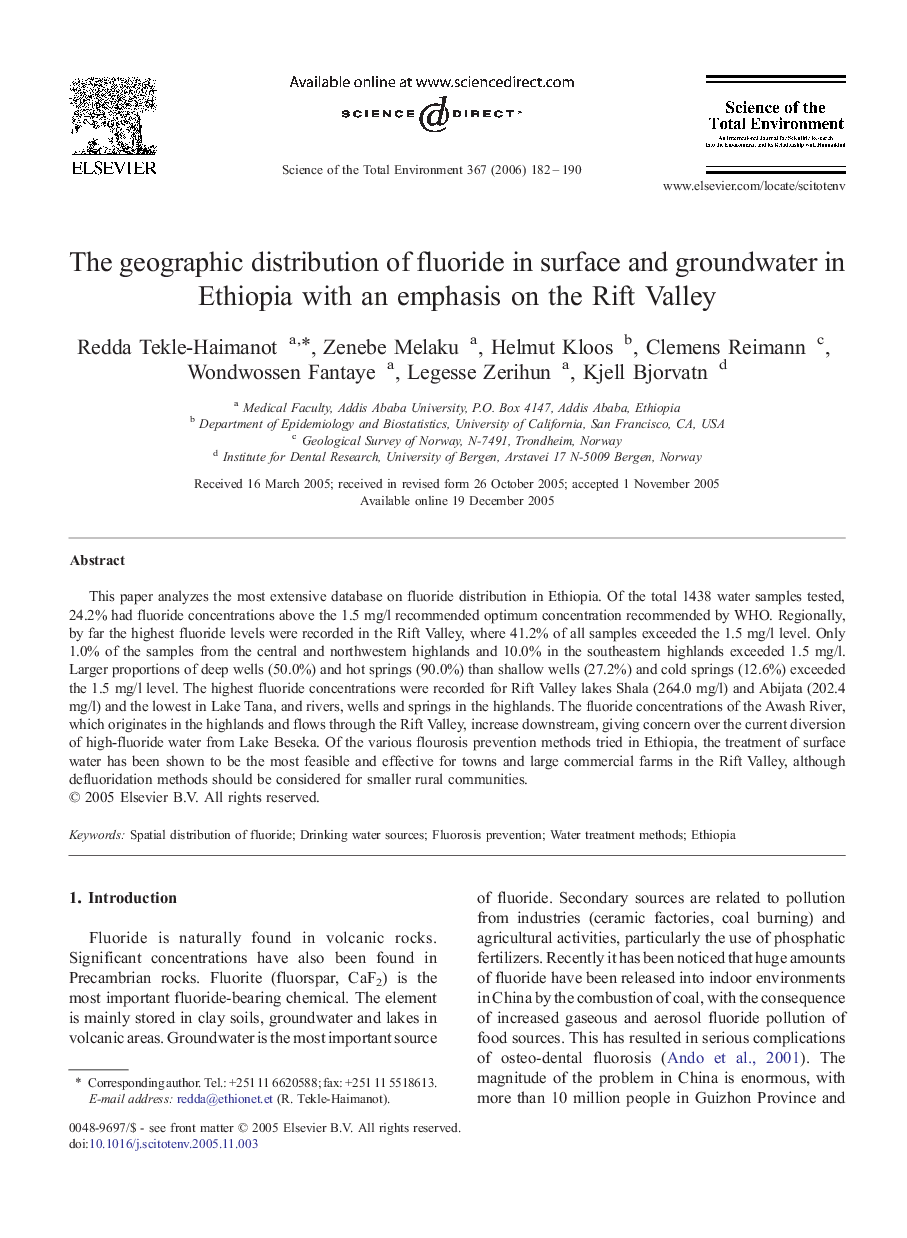| Article ID | Journal | Published Year | Pages | File Type |
|---|---|---|---|---|
| 4433993 | Science of The Total Environment | 2006 | 9 Pages |
This paper analyzes the most extensive database on fluoride distribution in Ethiopia. Of the total 1438 water samples tested, 24.2% had fluoride concentrations above the 1.5 mg/l recommended optimum concentration recommended by WHO. Regionally, by far the highest fluoride levels were recorded in the Rift Valley, where 41.2% of all samples exceeded the 1.5 mg/l level. Only 1.0% of the samples from the central and northwestern highlands and 10.0% in the southeastern highlands exceeded 1.5 mg/l. Larger proportions of deep wells (50.0%) and hot springs (90.0%) than shallow wells (27.2%) and cold springs (12.6%) exceeded the 1.5 mg/l level. The highest fluoride concentrations were recorded for Rift Valley lakes Shala (264.0 mg/l) and Abijata (202.4 mg/l) and the lowest in Lake Tana, and rivers, wells and springs in the highlands. The fluoride concentrations of the Awash River, which originates in the highlands and flows through the Rift Valley, increase downstream, giving concern over the current diversion of high-fluoride water from Lake Beseka. Of the various flourosis prevention methods tried in Ethiopia, the treatment of surface water has been shown to be the most feasible and effective for towns and large commercial farms in the Rift Valley, although defluoridation methods should be considered for smaller rural communities.
